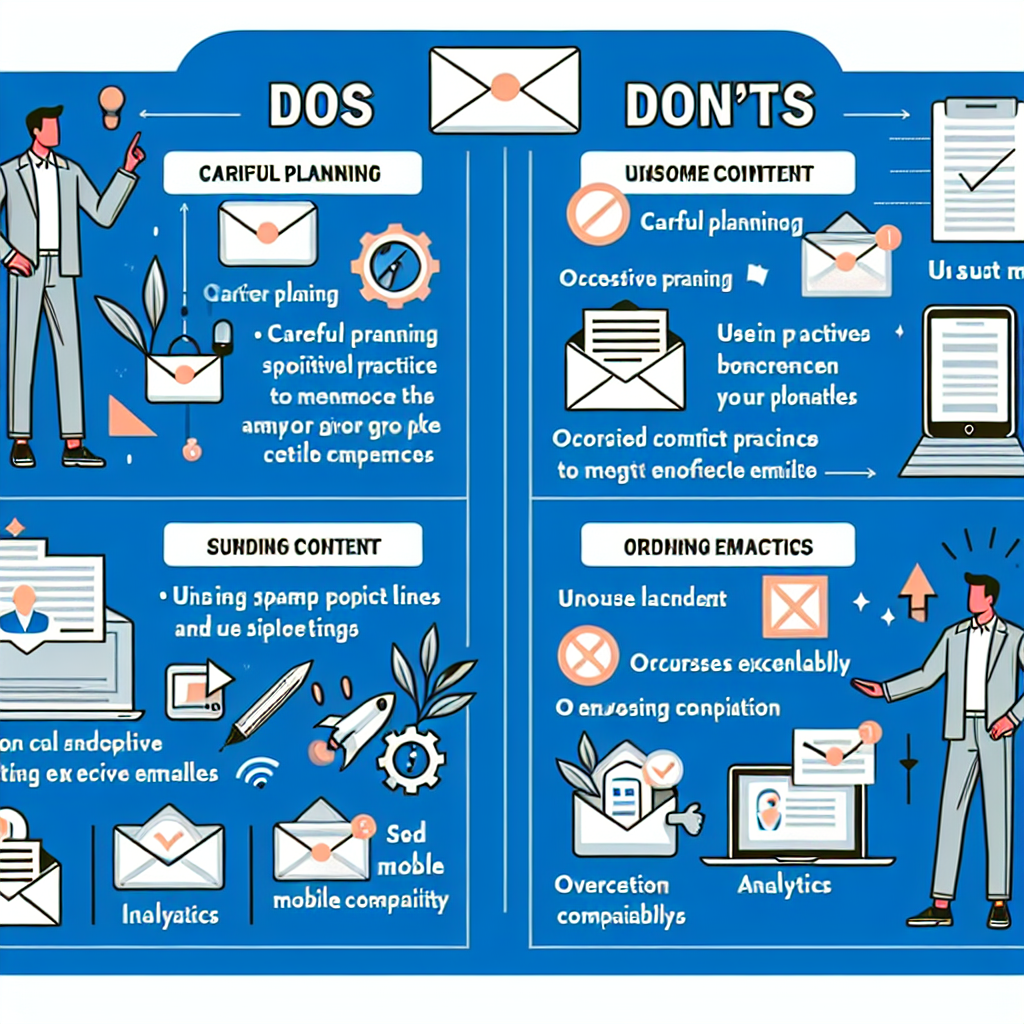The Art of Email Copywriting: Dos and Don’ts
Email copywriting is an essential skill in the digital age. With billions of emails sent every day, standing out in a crowded inbox is more challenging than ever. Effective email copy can engage your audience, drive conversions, and build long-lasting relationships. In this comprehensive guide, we will explore the art of email copywriting, its dos and don’ts, and provide actionable tips to help you craft compelling emails that resonate with your readers.
The Importance of Email Copywriting
Emails are a direct line of communication with your audience. According to Statista, approximately 306.4 billion emails were sent and received each day in 2020, and this number is expected to grow to over 376.4 billion by 2025. With such a high volume, crafting an email that grabs attention and drives action is crucial.
Dos of Email Copywriting
Creating effective email copy involves several best practices. Here are some dos to consider:
1. Personalize Your Emails
Personalization can significantly increase engagement. A study by Campaign Monitor found that emails with personalized subject lines are 26% more likely to be opened. Use the recipient’s name, reference past interactions, or tailor content based on their preferences.
2. Craft Compelling Subject Lines
The subject line is the first thing your recipient sees. It should be compelling enough to entice them to open the email. Keep it short, clear, and relevant. According to HubSpot, subject lines with 6-10 words have the highest open rates.
3. Make Your Content Scannable
Most people skim through emails rather than read them thoroughly. Use short paragraphs, bullet points, and subheadings to make your content easy to scan. This helps readers quickly grasp the key points.
4. Include a Clear Call-to-Action (CTA)
Every email should have a clear purpose and a call-to-action. Whether it’s clicking a link, downloading a resource, or making a purchase, your CTA should be prominent and easy to follow. Use action-oriented language and make sure it stands out visually.
5. Test and Optimize
Regularly test different aspects of your email campaigns, including subject lines, content, and CTAs. Use A/B testing to compare variations and determine what works best. Analyze the results and optimize your emails for better performance.
Don’ts of Email Copywriting
Equally important are the practices to avoid in email copywriting. Here are some don’ts:
1. Don’t Overwhelm with Information
Avoid cramming too much information into one email. Focus on a single message or goal to keep your email concise and impactful. Overloading your audience with information can lead to confusion and disengagement.
2. Don’t Use Spammy Language
Words like “free,” “guarantee,” and “urgent” can trigger spam filters and reduce your email deliverability. Avoid using such language and focus on creating genuine, value-driven content.
3. Don’t Neglect Mobile Optimization
With more than half of all emails being opened on mobile devices, it’s crucial to ensure your emails are mobile-friendly. Use responsive design, keep your subject lines short, and ensure that your CTAs are easily clickable on smaller screens.
4. Don’t Forget to Proofread
Errors in your email can undermine your credibility and professionalism. Always proofread your emails before sending them out. Check for spelling, grammar, and formatting issues to ensure your message is clear and polished.
5. Don’t Ignore Your Audience’s Preferences
Your audience’s preferences should guide your email strategy. Pay attention to their feedback, analyze engagement metrics, and adjust your approach accordingly. Ignoring their preferences can lead to higher unsubscribe rates and lower engagement.
Actionable Tips for Effective Email Copywriting
Here are some practical tips to help you create more effective email copy:
1. Use Storytelling
Storytelling can make your emails more engaging and relatable. Share anecdotes, case studies, or customer success stories to illustrate your points and connect with your audience on an emotional level.
2. Leverage Social Proof
Social proof, such as testimonials, reviews, and user-generated content, can build trust and credibility. Highlight positive feedback from satisfied customers to reinforce the value of your products or services.
3. Segment Your Audience
Segmenting your audience allows you to send more targeted and relevant emails. Group your subscribers based on demographics, behavior, or preferences, and tailor your content to each segment’s needs and interests.
4. Keep It Conversational
Write your emails in a conversational tone to make them more approachable and engaging. Use simple, straightforward language and avoid jargon or overly formal phrasing.
5. Provide Value
Your emails should always provide value to your readers. Whether it’s useful information, exclusive offers, or helpful resources, make sure your content is relevant and beneficial to your audience.
Conclusion
Mastering the art of email copywriting requires understanding your audience, crafting compelling messages, and continuously optimizing your approach. By following the dos and don’ts outlined in this guide and implementing the actionable tips provided, you can create emails that stand out in crowded inboxes, drive engagement, and achieve your marketing goals.
Remember, successful email copywriting is both an art and a science. Keep experimenting, learning, and refining your skills to stay ahead in the ever-evolving world of email marketing.


